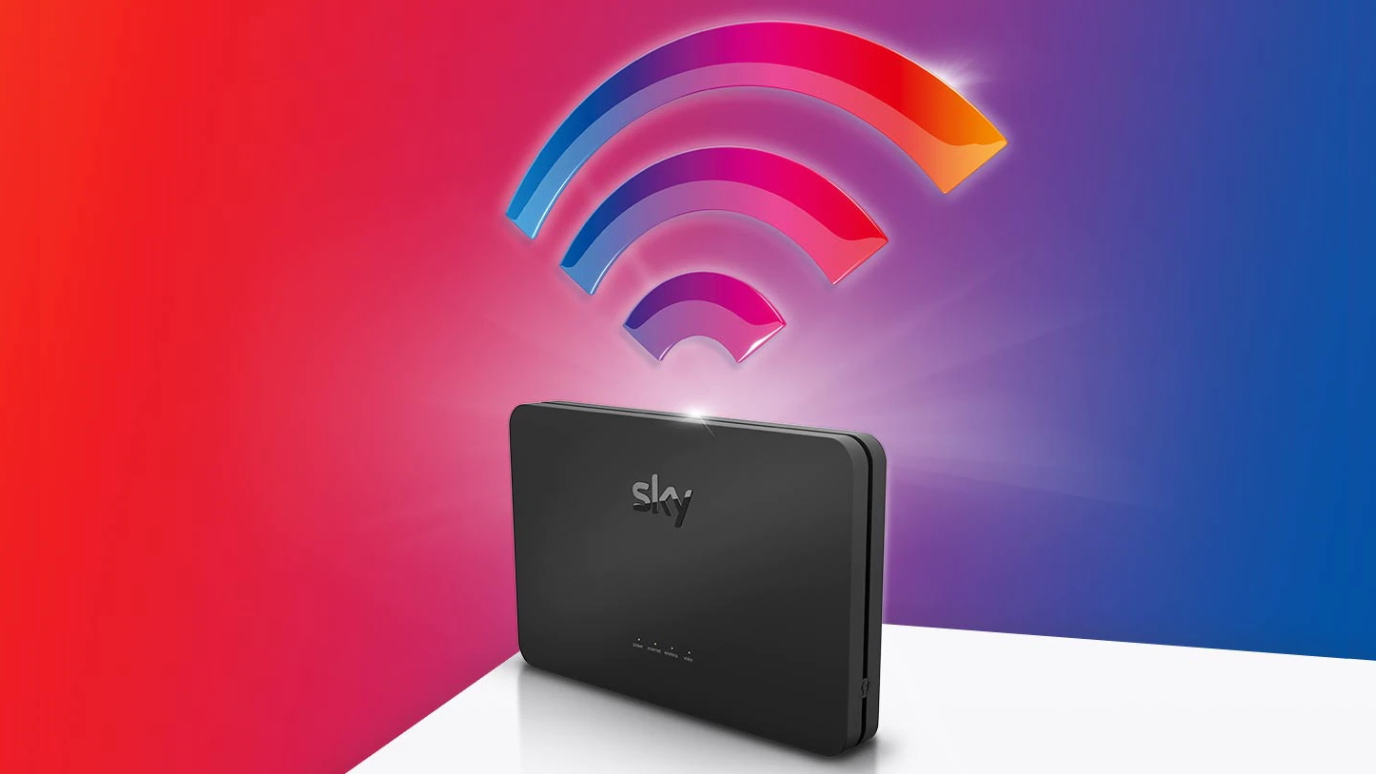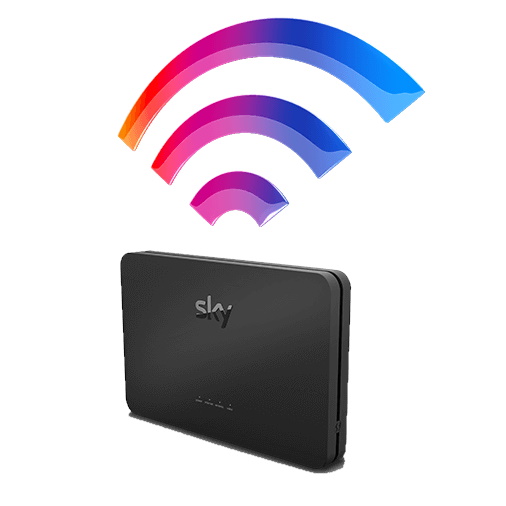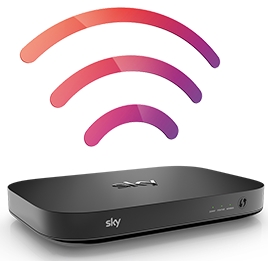How to set up Sky Broadband
Get your new broadband from Sky up and running in no time.

When shopping around for the best broadband deals and picking a new tariff, you may well have opted for a Sky Broadband deal, as this household name is the chosen provider of millions of customers around the UK.
Whether it's the slower, cheaper ADSL options, its many ultrafast Full Fibre packages, or even its variety of broadband and TV bundles, Sky can cater to various online needs and requirements. What's more, it's renowned for its dependable service and top-tier customer support.
When you do pick your new tariff with Sky, you'll likely want to make sure you can get your broadband up and running as quickly as possible so you can start making the most of everything it has to offer. However, getting set up can be tricky at times as Sky has a variety of different broadband hubs and each has its own installation process.
In this guide, we've explained the setup processes for each of the hubs you can receive with your chosen Sky Broadband deal.
Sky's broadband hubs
Firstly, to give you an initial idea of what router (hubs) you might get, the two most common offered by Sky are:
- Sky Broadband Hub: You'll likely get this hub across most of Sky's current broadband packages.
- Sky Max Hub (sometimes called WiFi Max): You can upgrade to this premium Hub for additional WiFi 6 capabilities.
You may also be offered a Sky Q Hub – although these are typically only for TV bundles and are likely to be phased out soon. In some cases, you can also receive a different, smaller Sky Hub, but again this is only in rare instances and for older connection types.
Below we've taken a look at each main hub in isolation and discussed what you need to do to set each of them up, based on the official guidance from Sky itself. We also cover the basics of the information you should receive from Sky when starting a new broadband contract.
Sign up for breaking news, reviews, opinion, top tech deals, and more.

How to set up your Sky Broadband Hub
Sky Broadband Hub
Starting with the most common router Sky Broadband customers get – the Sky Broadband Hub – the setup process will follow these steps:
1. Getting your new tech and waiting for your activation date
Sky will send you your hub in the post, but your broadband won't work until it gets activated on your aptly named 'activation date'. This will be a day you agree with Sky when you sign up.
2. Putting your hub in the best location
When your broadband is activated, Sky recommends first positioning the hub in a place that will give you the best WiFi signal. Specifically, Sky suggests:
- Out in the open and not behind any furniture or other devices. Ideally 30cm away from anything else.
- Not near other devices that emit wireless signals (e.g. phones and baby monitors)
- In a place where you'll use the internet a lot, so you get the best WiFi signal.
- Where it can reach and connect to your broadband socket or terminal.
3. Find the port on the broadband socket/terminal you have in your property
The socket or terminal you'll have will depend on a few things, firstly what type of broadband package you've chosen and whether you have internet calls or a dedicated phone line. At the time of writing, it will be one of the following:
- A standard phone port
- A double phone and internet port
- A socket with a 'G.Fast' logo on it
- An 'Optical Network Terminal' or 'ONT'
Whatever you do have, it's likely to be where the phone line enters your property. Equally, you might have needed a Sky engineer to come out and fit the socket/terminal for you already - especially if you've upgraded to a faster Full Fibre tariff.
4. Plug in the cables to the right ports
Whether you have Ethernet cables or phone cables, follow the guidance/documentation you'll get with your hub to connect the right ones from your hub's sockets to those inside your property.
For example, you may have a yellow and black-ended Ethernet cable which you simply need to match up to the corresponding coloured ports. Or for phone lines, simply look for the port that has a phone symbol above it.
5. Plug in the power cables and turn on the hub
Lastly, take the power cable and plug the small (usually blue) end into your hub and insert the other end with the plug into the closest mains socket, and then turn it on. Your hub should power up and as soon as all the lights on the front have turned green, your broadband will be up and running and the hub will be emitting a WiFi signal for connecting your devices.
A final tip is to try and keep your cables untangled and not touching, as this helps prevent electrical interference.
If you need any additional support with connecting your devices to your router - including where to find your username and password – Sky has some explainer guides here.

How to set up your Sky Max Hub
Sky Max Hub
If you've opted to upgrade to the Sky Max Hub, then the good news is that the processes for setting this up and getting your broadband working is largely the same.
The main difference is with how the hub actually looks; the Max Hub is white and its light colours are white, whereas the standard hub is black with green power lights. Also, you can use your 'My Sky' app to go through the setup process with this particular hub.
However, if you want to do this manually, you need to:
1. Get your hub delivered and also wait for your activation date
2. Place it in the best location for signal and performance
3. Find the ports on the hub and the sockets/terminals in your property
4. Plug in the right cables to the right ports
5. Plug in the power cable and turn on the device
With this last point – and as alluded to above – the light colour on the Max Hub is white and it will flash for a few minutes before staying on. This indicates the Max Hub is set up and ready to use.
Sky also recommends leaving your Max Hub on at least 24 hours, so it can fully download and update its internal software.
What if I have another type of Sky Hub?
As we mentioned earlier, there are a couple of other older hub - the Sky Q Hub and the Sky Hub - that you might have or get with some Sky Broadband packages. If this is the case, you don't need to worry as the installation and broadband setup process follows the same five steps we've run through with the main routers.

Other Sky Broadband installation tips
If you continue to have any issues setting up your Sky Broadband, then what you can do is contact Sky directly via its dedicated customer support channels. They should be able to advise you on what you need to do to get your broadband installed and working.
We also have a general guide to broadband installation where you can pick up some other tips and advice that might be useful if you encounter any technical hitches.
It's also worth knowing that if you have your own router or hub that you'd like to use, there are ways you can do this with Sky Broadband. So long as it's a piece of tech that's compatible with Sky's fibre or Full Fibre network, you should be able to configure your Sky Hub to instead act more like a modem that you can connect to your own router.
Finding your next broadband deal
While we think Sky is a fantastic choice as a broadband provider, some customers can be put off by how expensive some of its packages can be - particularly its ultrafast Full Fibre options.
If this is the case for you, or you just want to compare Sky's broadband to the rest of the market, then head over to our best broadband deals page. In this guide we've listed out all the best offers from all the best providers in the country.
What's more, if you want to see what you can get in your specific location, then just pop your postcode into the widget below and we'll list out all the deals you can get in your area right now.

Rich is a freelance copywriter and content strategist with over 10 years' experience. His career has seen him work in-house and in various agencies, producing online and offline content marketing campaigns and copywriting for clients in the energy industry.